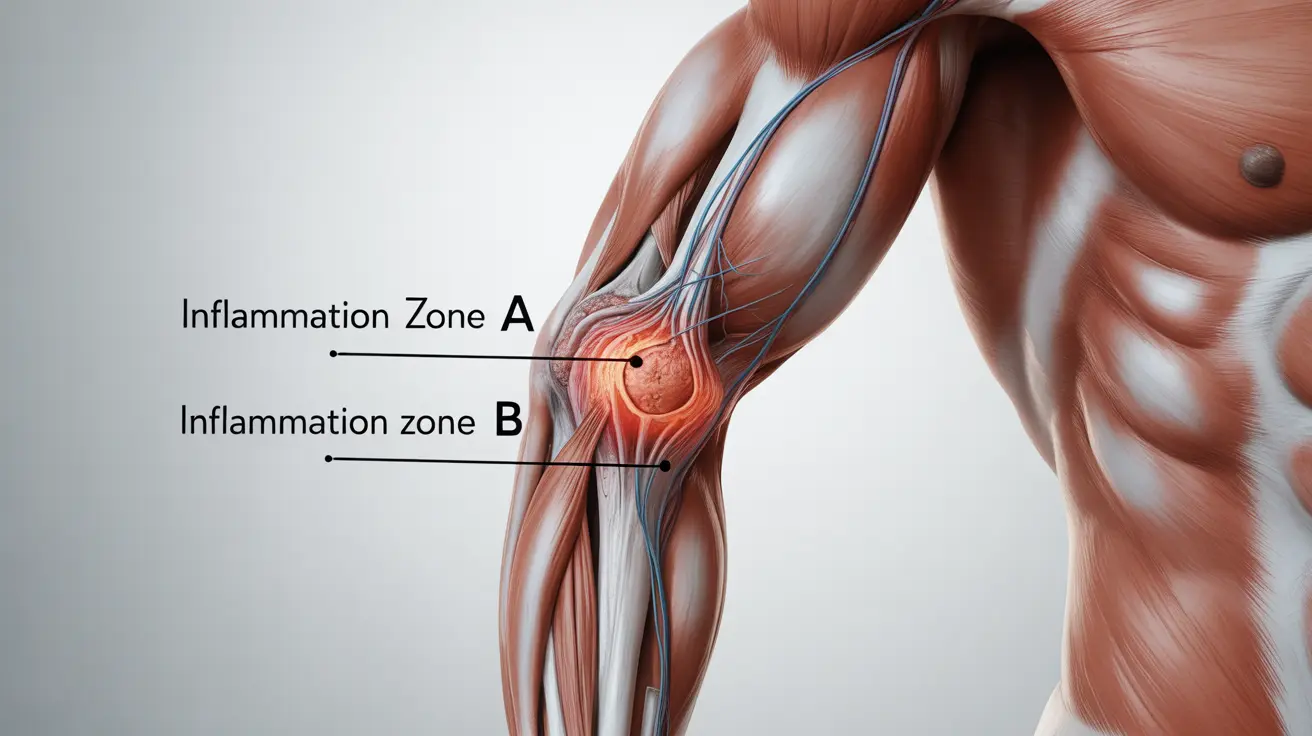Tricep tendonitis is a common overuse injury that affects the tendon connecting the triceps muscle to the elbow. This painful condition can significantly impact daily activities and athletic performance, making it crucial to understand its symptoms, causes, and treatment options. Whether you're an athlete, fitness enthusiast, or someone experiencing unexplained elbow pain, learning about tricep tendonitis can help you identify and address the condition effectively.
In this comprehensive guide, we'll explore everything you need to know about tricep tendonitis, from recognizing early warning signs to implementing effective treatment strategies and prevention measures.
Understanding Tricep Tendonitis
Tricep tendonitis occurs when the tendon that attaches your triceps muscle to your elbow becomes inflamed or irritated. This condition typically develops gradually over time due to repetitive stress or sudden increases in activity level that affect the triceps tendon.
Common Signs and Symptoms
Recognizing the symptoms of tricep tendonitis early can help prevent the condition from worsening. Common indicators include:
- Pain at the back of the elbow, especially during movement
- Tenderness when touching the affected area
- Swelling around the triceps tendon
- Weakness in the affected arm
- Stiffness, particularly in the morning
- Increased pain during pushing movements
Risk Factors and Causes
Several factors can contribute to the development of tricep tendonitis:
Athletic Activities
Certain sports and activities pose a higher risk, including:
- Weightlifting, especially heavy pressing movements
- Baseball or cricket bowling
- Gymnastics
- Basketball
- Boxing or martial arts
Other Risk Factors
Additional factors that may increase your risk include:
- Poor exercise form or technique
- Sudden increases in training intensity
- Age-related tendon degeneration
- Previous elbow injuries
- Occupations requiring repetitive arm movements
Diagnosis Process
Healthcare providers typically diagnose tricep tendonitis through a combination of methods:
- Physical examination
- Medical history review
- Range of motion tests
- Strength assessments
- Imaging studies (if necessary)
Treatment Approaches
Conservative Treatment
Initial treatment usually focuses on non-invasive methods:
- Rest and activity modification
- Ice therapy for acute pain
- Anti-inflammatory medications
- Gentle stretching exercises
- Progressive strengthening program
Physical Therapy
A structured physical therapy program may include:
- Specific exercises to improve strength and flexibility
- Manual therapy techniques
- Ultrasound or electrical stimulation
- Education on proper movement patterns
Advanced Treatment Options
For persistent cases, additional treatments might be considered:
- Corticosteroid injections
- Platelet-rich plasma (PRP) therapy
- Surgery (in severe cases)
Prevention Strategies
Preventing tricep tendonitis involves several key practices:
- Proper warm-up before activities
- Gradual progression in exercise intensity
- Regular stretching and mobility work
- Correct form during exercises
- Adequate rest between training sessions
- Cross-training to prevent overuse
Frequently Asked Questions
What are the common symptoms and signs of tricep tendonitis?
The most common symptoms include pain at the back of the elbow, tenderness to touch, swelling around the triceps tendon, weakness in the affected arm, and increased pain during pushing movements or overhead activities.
What causes tricep tendonitis and who is at higher risk of developing it?
Tricep tendonitis is typically caused by repetitive stress, overuse, or sudden increases in activity. Athletes involved in throwing sports, weightlifting, or gymnastics are at higher risk, as are individuals who perform repetitive arm movements in their occupation.
How is tricep tendonitis diagnosed by doctors?
Doctors diagnose tricep tendonitis through physical examination, medical history review, and assessment of symptoms. They may perform specific movement tests and, if necessary, order imaging studies like MRI or ultrasound to confirm the diagnosis.
What are the most effective treatment options for managing tricep tendonitis?
Effective treatment typically includes a combination of rest, ice therapy, anti-inflammatory medications, and physical therapy. More severe cases may require corticosteroid injections or, rarely, surgical intervention.
How can tricep tendonitis be prevented during sports or physical activities?
Prevention strategies include proper warm-up, maintaining good form during exercises, gradual progression in training intensity, regular stretching, and adequate rest between activities. It's also important to avoid sudden increases in training volume or intensity.




